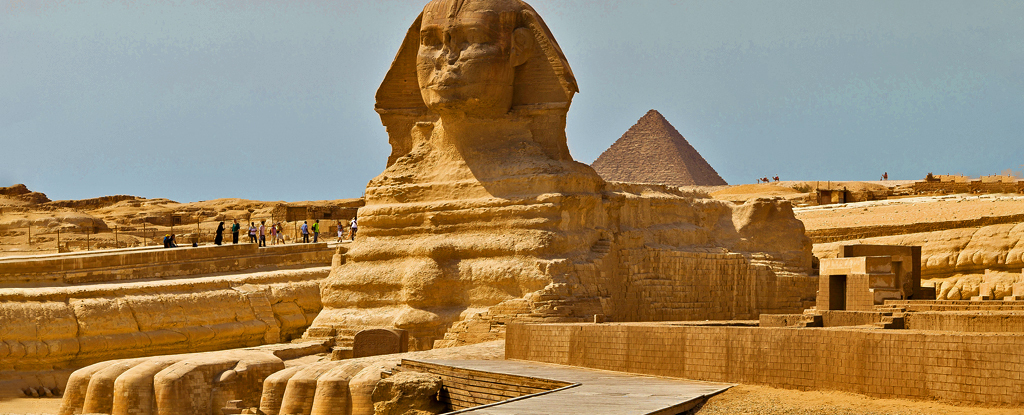Before ancient Egyptians refined the Great Sphinx of Giza, natural forces may have helped carve the iconic monument’s massive feline shape out of a single mass of limestone.
Fluid dynamics experiments reveal the structure’s ‘reclined lion’ shape could have been carved not by human hands, but fast-flowing wind.
“Our findings offer a possible ‘origin story’ for how Sphinx-like formations can come about from erosion,” says experimental physicist and applied mathematician Leif Ristroph from New York University.
“Our laboratory experiments showed that surprisingly Sphinx-like shapes can, in fact, come from materials being eroded by fast flows.”
Speculation over nature’s hand in carving the Sphinx isn’t new. As far back as the 1950s, it’s been suggested the statue’s body may have been weathered by ancient waters.
…
The resulting shapes resemble yardangs, contorted hunks of stone seen in many desert regions where winds scoop up sands to hurl at every obstacle. Eventually, this sandblasting can shape even the hardest and most massive rock formations into convoluted structures.
“There are, in fact, yardangs in existence today that look like seated or lying animals, lending support to our conclusions,” says Ristroph.
I’m pretty sure we knew this already? I’m certain I saw a documentary about this like 15 or so years ago. It had a computer animated time lapse and everything, showing how wind and water weathering formed the rough shape for thousands of years before people formed a society in the area, and then people eventually carving the head and refining the body.
I think it was on either the Discovery channel before it went to shit, or possibly BBC.
There were likely a few documentaries for and against when Robert Schoch suggested water erosion “proved” the Sphinx was much older. Cobblers but it may have focused a few minds on the question of erosion.
Maybe it was on the History channel so could have been unfinished research and premature reporting from them.
That’s possible. It’s been a long time ago and I can’t find the documentary now.
You could even go further and suggest that the unusual rock formation was what initially drew the ancient Egyptians to the Giza Plateau in the first place.
Even today we have a fascination with natural or accidental simulacra.
Aliens.
And no, I will not read the whole article.
Definitely aliens.
deleted by creator
Just because white people didn’t do it, doesn’t mean it was
aliens.the wind, now, apparently. 🙄🙄🙄They aren’t saying that Egyptians didn’t carve it (they clearly did), just that they could have carved a yardang into the Sphinx.
yardang
TIL. That’s a fun one.
I knew it but couldn’t have come up with the name at short notice - it’s now getting properly filed away for a future use, that’ll never arrive.








